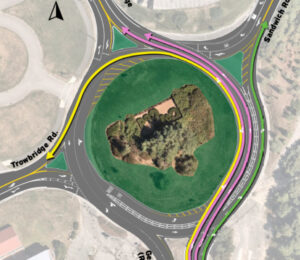 HYANNIS – Here’s one more reason to snuff the cigarette habit. Smoking leads to a higher risk of a dangerous abdominal aortic aneurysm (AAA) forming in the body’s largest artery, and a recent study showed that the odds drop when people quit smoking.
HYANNIS – Here’s one more reason to snuff the cigarette habit. Smoking leads to a higher risk of a dangerous abdominal aortic aneurysm (AAA) forming in the body’s largest artery, and a recent study showed that the odds drop when people quit smoking.
“If you quit, your risk of forming an aneurysm that can lead to a deadly rupture goes down,” said James B. Knox, MD, a vascular surgeon at the Cape Cod Healthcare Vascular and Vein Center of Cape Cod in Falmouth.
“Most patients know about the links between smoking and lung cancer, smoking and heart attacks, smoking and hardening of the arteries. But they often don’t realize that smoking is harmful in terms of leading to more aneurysms or rapid aneurysm growth and a higher risk of rupture,” he said. “All these things are very important with respect to smoking, so we stress that when we see patients who smoke.”
Experts have long known that smoking raises the risk of an AAA, a weak spot in the wall of the aorta, where it passes through the abdomen, according to MedlinePlus, an online publication of the U.S. National Library of Medicine website. The aorta is the body’s main artery, and if an aneurysm in that location ruptures, it can cause massive internal bleeding, the site notes.
Published in the journal Arteriosclerosis, Thrombosis and Vascular Biology, the new study followed 15,792 adults for more than 20 years. The researchers found that people who never smoked had a 2 percent chance of developing an abdominal aortic aneurysm. The risk was about 8 percent for women who smoked and almost 13 percent for men who smoked.
People who quit smoking during the study period saw their risk decline by 29 percent.
“Quitting can substantially reduce the risk of abdominal aortic aneurysm,” lead researcher Weihong Tang, MD, an associate professor at the University of Minnesota, told MedlinePlus. “It’s never too late to quit.”
Women Are More At Risk
Dr. Knox said he sees many patients who are actively smoking or who smoked a long time and have quit. He said screening for aneurysms is a good idea for smokers, especially those with a family history of aneurysms. While aneurysms are more common in men than women, women are four times more likely to have an aneurysm rupture, according to Dr. Knox.
“They’re less common in women but they are more deadly,” he said.
If an abdominal aortic aneurysm is found, the course of action depends upon its size.
“We do fairly sophisticated CT scans designed to map out the extent and size of the aneurysm,” said Dr. Knox.
There’s no real medical treatment for an aneurysm, he said.
“We stress all the heart-healthy things. Quit smoking. Control blood pressure – that’s a huge factor – diet and exercise.”
If an aneurysm grows to be 5.5 centimeters or larger, a stent-graft (a stent with a polyester tube) to keep blood from flowing through the aorta while excluding the aneurysm, can be inserted through small incisions in the groin, he said.
Patients usually don’t feel any symptoms from an aneurysm, which is why screening is important. If the aneurysm ruptures, however, the patients will feel “sudden and severe abdominal pain, sometimes radiating through to the left side or the left lower back, usually associated with feelings of being very ill, light-headed, weak, passing out,” Dr. Knox said. “The chance of dying from that can be in the 75 to 80 percent range.”
Based on the findings of the University of Minnesota study and his own career of treating patients with vascular issues, Dr. Knox had one word of advice for smokers:
“Quit.”























